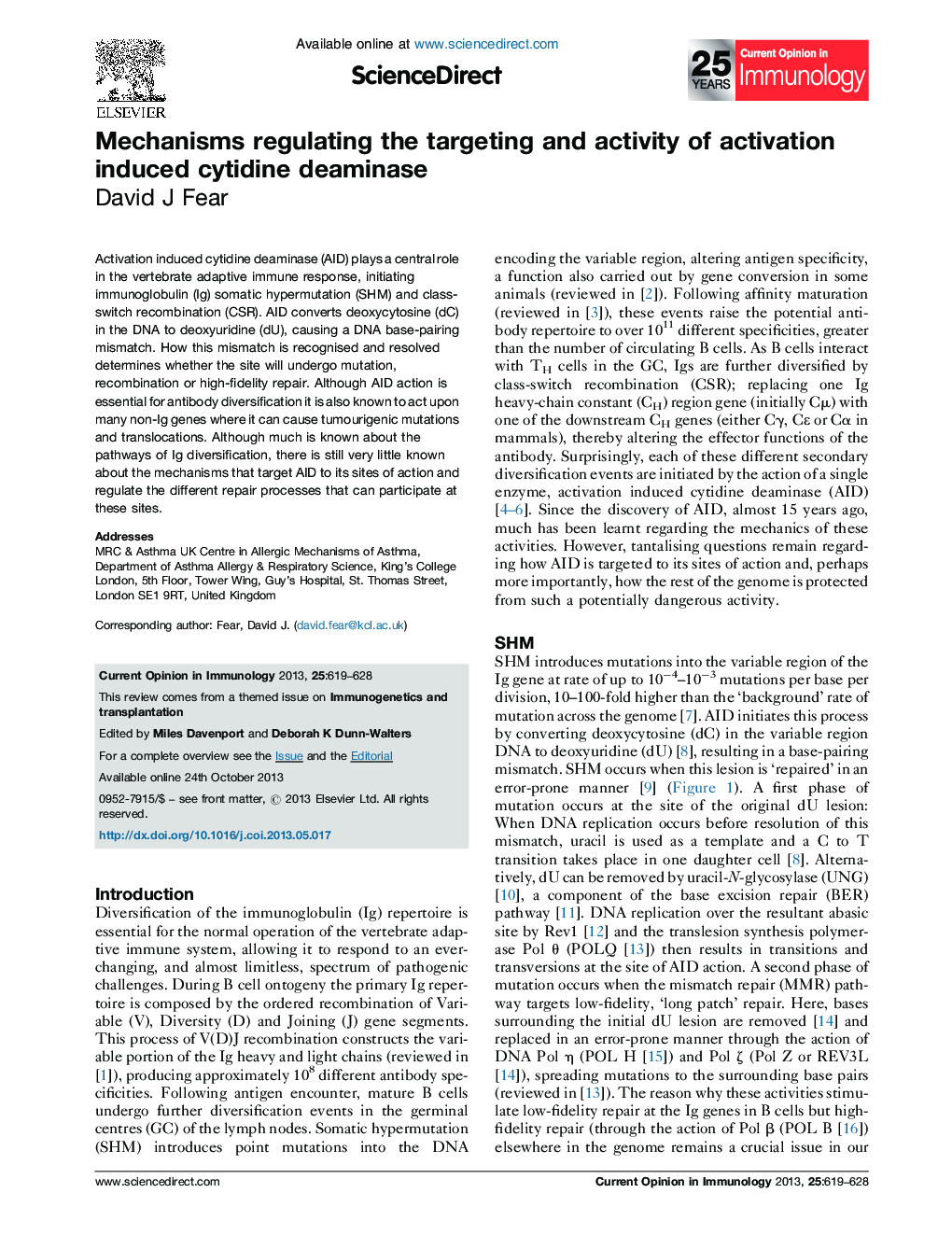| Article ID | Journal | Published Year | Pages | File Type |
|---|---|---|---|---|
| 3345832 | Current Opinion in Immunology | 2013 | 10 Pages |
•AID initiates Ig diversification by SHM and CSR via incorporation of dU into DNA.•In SHM, the error-prone BER and MMR and high-fidelity HR pathways resolve dU.•CSR is brought about through the classical-NHEJ and alternative-EJ pathways.•AID is likely targeted by transcription factors, histone modifications and RNAP.
Activation induced cytidine deaminase (AID) plays a central role in the vertebrate adaptive immune response, initiating immunoglobulin (Ig) somatic hypermutation (SHM) and class-switch recombination (CSR). AID converts deoxycytosine (dC) in the DNA to deoxyuridine (dU), causing a DNA base-pairing mismatch. How this mismatch is recognised and resolved determines whether the site will undergo mutation, recombination or high-fidelity repair. Although AID action is essential for antibody diversification it is also known to act upon many non-Ig genes where it can cause tumourigenic mutations and translocations. Although much is known about the pathways of Ig diversification, there is still very little known about the mechanisms that target AID to its sites of action and regulate the different repair processes that can participate at these sites.
